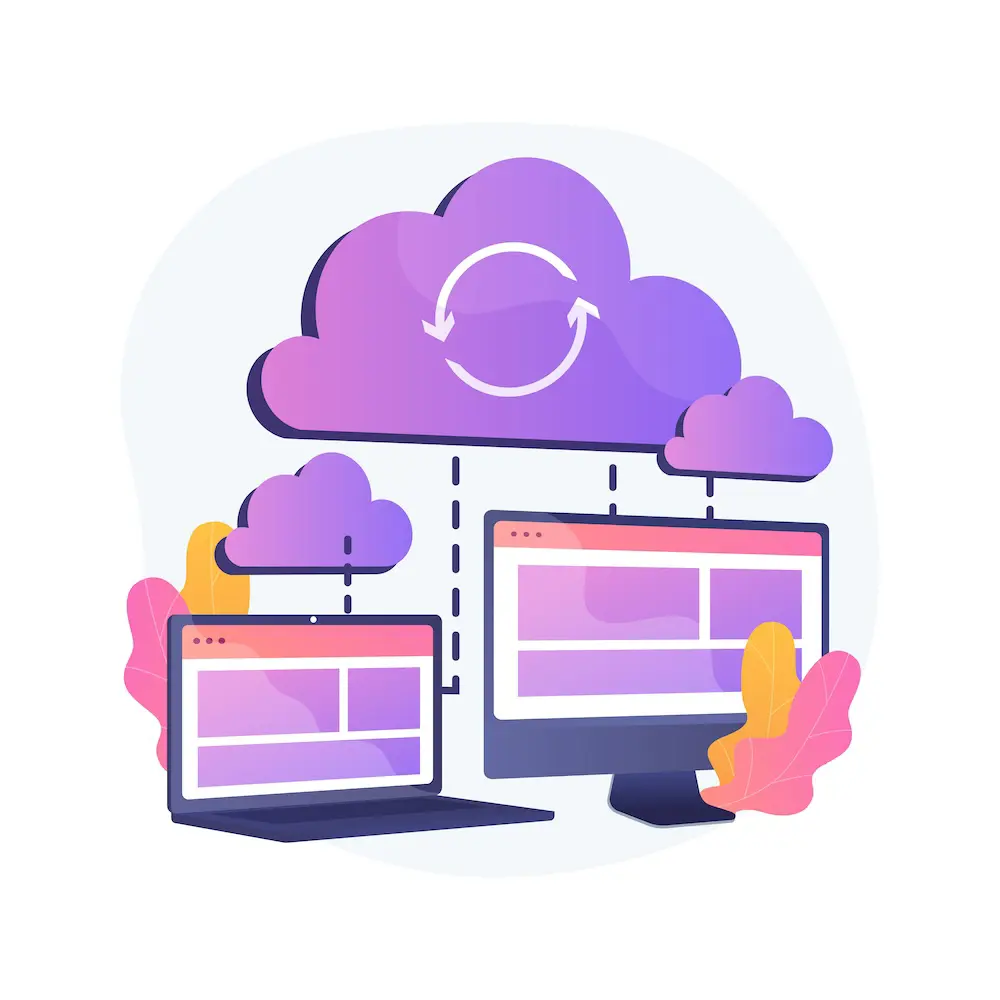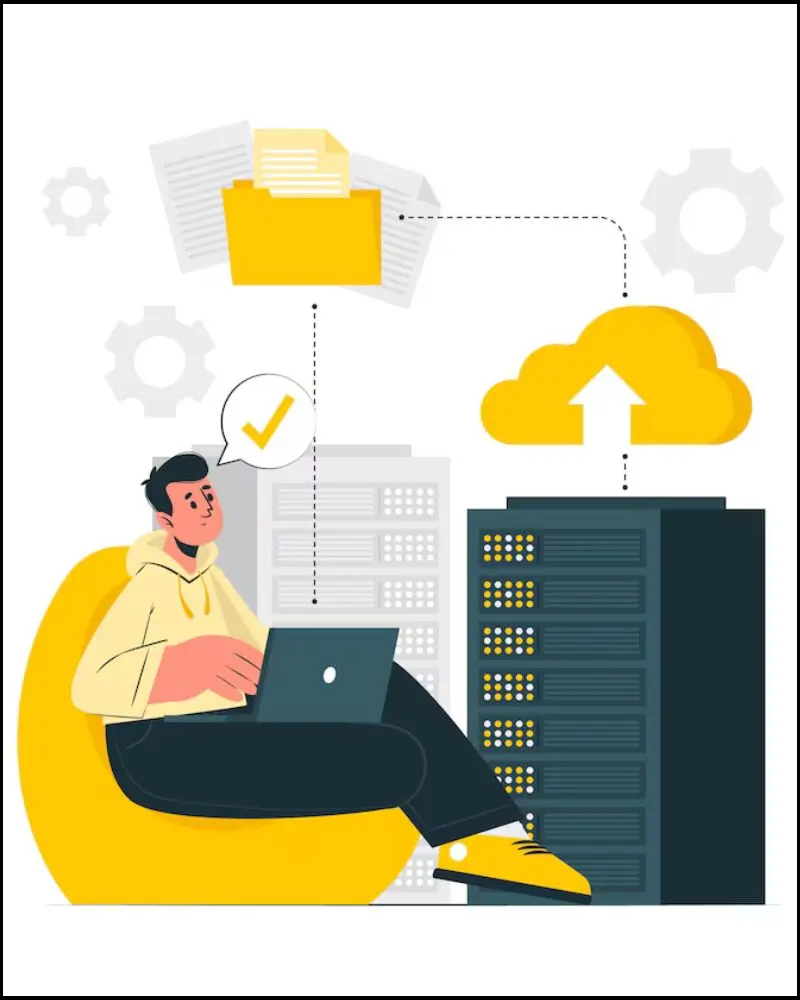Maintaining a student's engagement in today's fast-paced world can be a challenge. With the advancement of technology in the 21st century, traditional learning methods may not resonate with all students and it can be a struggle to compete. This is where eLearning software comes in.
eLearning software is an innovative online platform designed to create a dynamic approach to education by incorporating interactive resources, multimedia elements, and personalized learning paths. These things will aid in a better learning experience for all students.
The e-learning platform became ever more important after the COVID-19 pandemic when lots of institutions shifted online for their courses and examinations. It is also estimated that the global e-learning market will continue to grow by 5% on an annual basis.
What Is An eLearning Software?
eLearning software is a digital tool that allows teachers to create and manage online learning experiences. This software offers multiple features for designing lessons, putting multimedia content like videos and quizzes, as well as tracking learner progress.
Teachers can employ it to build engaging courses, while students enjoy a flexible and often personalized learning pace. With addition of visual content and interactive quizzes, learning becomes more fun than the traditional board and marker system on-site.
Capabilities Of eLearning Software
The development of tech also improves the e-learning software out there. Today, these software have a wide array of capabilities that help boost the student's learning experience and make a teacher's process easier.
The first thing that an e-learning software can offer is a content creation service. Now, tutors can develop high-quality learning materials for their students with easy-to-use authoring tools without a coding background. Teachers can also develop courses with multimedia elements like videos, quizzes, and simulations.
Similarly, a tutor can use the Learning Management System to upload courses, manage pupil's enrollment, identify knowledge gaps, and track their progress. Engagement features like badges, gamification, and discussion forums can foster a fun learning environment.
With the e-learning software packing so many features, it is truly a comprehensive toolkit for engaging pupils by broadening their knowledge.
eLearning Software Advantages
There are multiple advantages that an e-learning software offers for the students. With these tools, a student does not have to learn through the traditional board and marker system while still getting crucial education. It is truly a win-win situation for the pupils.
Here is the list of some primary advantages that e-learning software offers:
- Personalized Learning: Some e-learning software tailors student's learning path to their strengths and weaknesses, helping maximize their knowledge gain.
- Up-to-Date Information: Teachers can easily update their course content, ensuring that their pupils learn the latest information on any subject.
- Cost Effective: An eLearning software is a budget-friendly option. It eliminates printing costs and classroom maintenance.
- Scalability: No matter how many students are being taught, e-learning software will accommodate everyone without geographical problems.
- Adaptability: The teacher can customize the learning software per their course materials and other requirements. This displays a highly adaptive environment to work on.
How to Implement E-Learning For Students?
A teacher has to understand three things before implementing E-learning for their courses. They are planning, implementation, and evaluation. Only after successful planning, does a teacher need to implement the learning process for a fun learning experience.
1. Analyze The Student Needs
The teacher has to look for the student's educational background, age, course expectations, and work experiences to tailor a good learning platform. A survey can aid the teacher in gaining cumulative knowledge of their pupils.
2. Identify Goals
What goal will the e-learning process provide to the students? Will the goal of the learning match with the course's outcome? These are some of the questions that an educator has to comprehend so that the students get the necessary skills without ruining the fun part.
3. Get Help From A Professional Team
e-learning technology can be quite difficult to adapt for beginners. Moreover, the students will need the best-of-the-best design to retain their interest and fulfill the course outcome. So, a teacher can get help from digitally savvy professionals like IT specialists and e-learning experts.
4. Use Learning Management System
Educators can employ a Learning Management System (LMS) to deliver and track the pupil's progress. Likewise, LMS can be used to explore online collaboration tools for student interaction.
5. Stay Connected With Students
It is integral to remain in touch with the students to foster a sense of community even in a digital space. Educators can perform this task by scheduling virtual discussions or live sessions for Q&A.
Challenges Of Using eLearning Software For Teaching
Although e-learning comes with multiple advantages as discussed above, it still comes with a fair number of challenges. Educators need to understand these problems thoroughly so that they don't become a hindrance in the long run.
The first challenge will be the face-to-face interaction that students will miss during the online learning process. It could be difficult to adapt to a virtual environment and some might even find it even more difficult to communicate in a virtual setting.
To combat this issue, many e-learning platforms have experimented with different types of VR and video conferencing settings to simulate a real-time environment. The next biggest challenge is the student's motivation and discipline.
Getting education from an e-learning platform will require a great deal of self-motivation for the students since they will be responsible for how they study and utilize the resources. The pupil has to follow good discipline since there won't be an educator's physical presence.
Top eLearning Software Platforms
With the e-learning market increasing every year, many software platforms have become available today. Let's delve into 4 platforms that are designated in the ultimate list of open-source LMSs.
Moodle
Moodle is an open-source LMS that offers a single, secure integrated system for client administrators, educators, and students. it is available for both desktop and mobile devices and there is a free version too.
An educator can utilize this platform for building courses, making quick guides, tracking progress, and setting up different activities with ease.
Open edX
It is an easy-to-use LMS tool where educators can build their courses with engagement in mind. Creation of learning sequences is possible along with organizing them into sections. Videos, PDFs, PPTs, and many other formats are supported on this platform.
Canvas
The Canvas LMS is another option for providing a great e-learning experience for students. Developed by Infrastructure, Canvas is known to be a highly customizable and reliable tool for educators.
Its features and interface are designed such that they save the teacher's time and effort while incorporating courses. Educators can build their interactive learning courses quickly with depth.
Chamilo
A great LMS tool for educators and training employees, Chamilo offers quality authoring tools for creating online materials.
They feature a customizable interface and embedding settings that create a powerful interactive course for all pupils. Chamilo also supports mobile-friendly content and is known for online support 24/7.
Integrating eLearning In Traditional Teaching
Integrating eLearning software platforms with traditional teaching methods is quite a blend in modern times. By mixing both of their positive elements, an educator can create a successful classroom for their students.
A teacher can utilize various ways to incorporate both of these teaching methods. For instance, they can include digital engagement in the classroom itself. They can open quizzes, fun interactive videos through projectors, and even play games that relate to the course materials.
Content Source:










